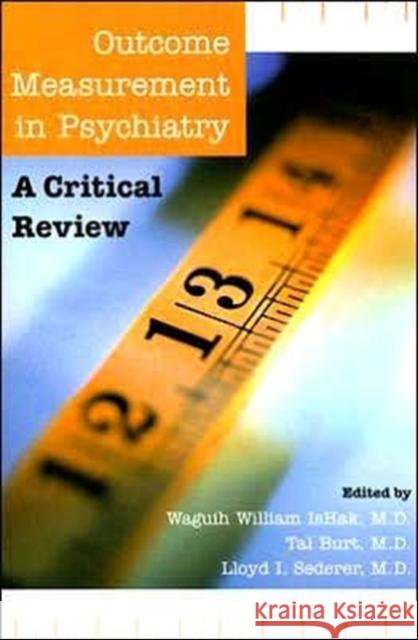Outcome Measurement in Psychiatry: A Critical Review » książka
Outcome Measurement in Psychiatry: A Critical Review
ISBN-13: 9780880481199 / Angielski / Miękka / 2002 / 488 str.
The past several decades of price wars in medicine have taken their toll -- and nowhere has the impact been greater than in the field of psychiatry. Today, patients and physicians alike are protesting -- louder than ever -- that quality patient care is being sacrificed to cost-cutting goals. What is quality patient care? Quality measures (i.e., validity, reliability, feasibility, usability, and comparability) link the care rendered to the results (i.e., outcomes) of that care, enabling us to define, measure, publicly report, compare, and ultimately improve care.This remarkable volume offers a critical analysis of outcome assessment, in psychiatry, which allows us to assess not only the measurable domains (i.e., symptoms, functioning, quality of life, and perception of care), but also the standards and instruments used to judge the quality of care. Divided into three major sections, this comprehensive textbook is more than just an inventory or nosology of measures; rather, it holds existing instruments to clear standards. - Section I, Understanding Outcomes Assessment, details the many fundamental concepts that underlie outcome measurement, including a "situational analysis" of outcome assessment, the scientific underpinnings of the field, and its important constructs (e.g., process and outcome, efficacy and effectiveness, basis statistics, quality improvement).- Section II, A Critical Review of the Instruments, critiques a wide variety of instruments that have high clinical utility, are in the public domain or of low cost and burden, and meet many of the quality standards of validity, reliability, feasibility, usability, and comparability. Organized by patient population (age, diagnoses, and disorders), these chapters describe both general and disorder-specific measures, with respondents that include patients, families, and clinicians. Data generated by these instruments therefore can be used to assess outcomes for individual patients, populations, and programs.- Section III, Challenges and Opportunities, discusses the obstacles to implementing assessment programs, regulatory and accreditation demands, confidentiality and training, and the technology of measurement and proven solutions, including a final chapter on future innovations using various types of brain imaging; laboratory tests (e.g., for homovanillic acid); immunological tests (e.g., G-protein and plasma prolactin, the hypothalamic-pituitary-adrenal axis); and acoustic (e.g., the "flat affect" of a patient's voice) and other technological tests. The three editors of this meticulously researched and written compilation have brought together the work of 48 distinguished contributors who, responding to today's mandate of public accountability, provide clinicians and clinical leaders with the tools they need to meaningfully incorporate quality measurement into clinical practice.











